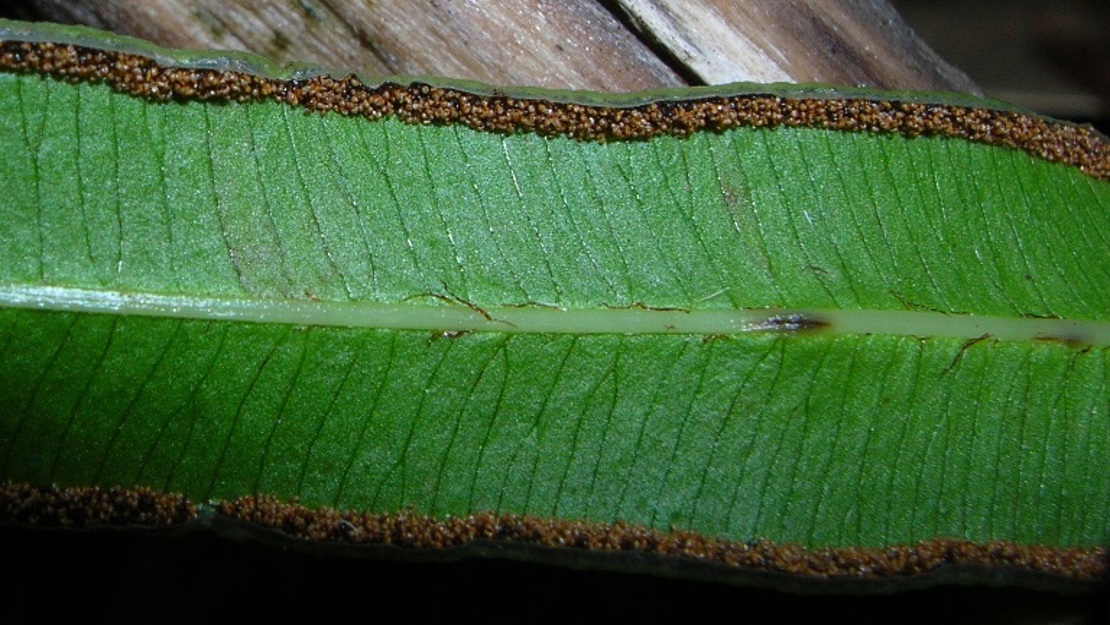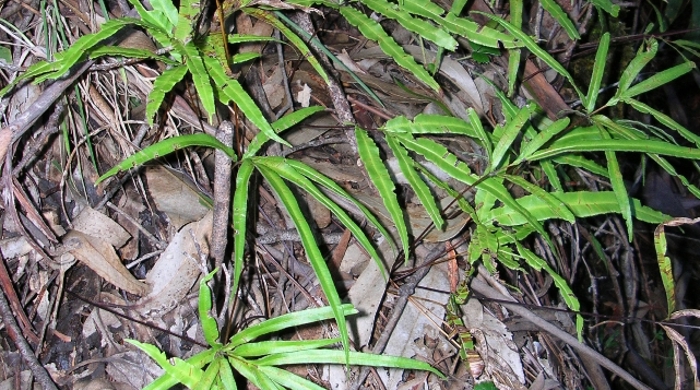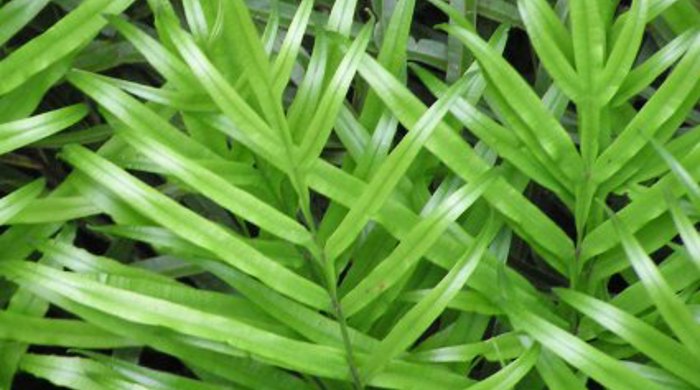Pteris cretica
Cretan brake
Family: Pteridaceae
Origin: Africa, Eurasia

Regional Pest Management Plan (RPMP) status
- Not a legally declared pest
General description
Fern < 75 cm tall. Rhizome is short and creeping. Stipes are yellow-brown. Fronds are pinnate and green or variegated. Pinnae are < 60 x 40 cm, arranged in 2-7 pairs, narrow and often forked when basal. Spores are borne along outer margin of the pinnae.
What you need to know
Although Cretan brake is not a legally declared pest plant, it may still be invasive in some situations. Consider lower-risk alternatives for your garden, such as native plants.
Habitats
Open areas, riparian margins, forest, rock faces, wasteland, urban areas, roadsides.
Dispersal
Spores dispersed by wind and water. Human-mediated dispersal through deliberate plantings.
Impact on environment
May outcompete and suppress regeneration of native vegetation. May hybridise with native Pteris species.
Control
Site Management
Follow up treated areas 3 times per year. Encourage natural regeneration of native plants or replant treated areas where possible after 2-3 treatments to establish dense ground cover and minimise reinvasion.
Recommended approaches
Physical control
Method: Dig out.
Plant parts requiring disposal: All parts.
Disposal options: Remove to greenwaste or landfill if practical.
Biocontrol
Biocontrol is currently not available for this species.
Community agrichemical control recommendations
No qualifications: Cut stump and paste freshly cut base of stems with metsulfuron gel.
Certified Handler/Experienced agrichemical user: Foliar spray with 5g metsulfuron-methyl per 10L of water and 20ml penetrant.
Caution: When using any herbicide or pesticide please read the label thoroughly to ensure that all instructions and safety requirements are followed.





